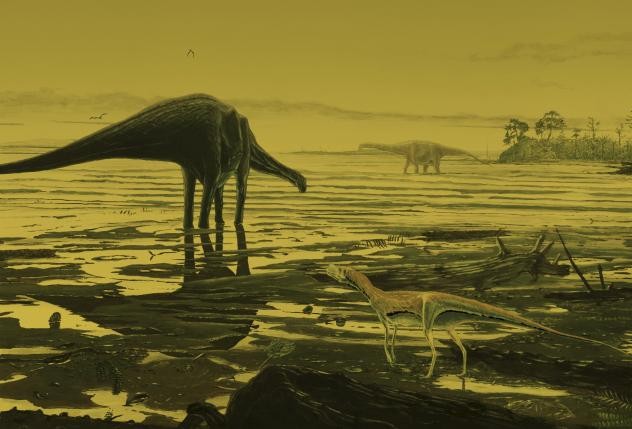Scientists recently discovered a site that contains hundreds of footprints from the plant-eating dinosaur Sauropod. The footprints were discovered in the Isle of Skye in Scotland. Scientists believe that they have discovered the biggest dinosaur site in Scotland.
Researchers from the Edinburgh University discover the dinosaur footprints on the north eastern tip of the island. The footprints create a zigzag pattern on a slab of rock which is reaching out to the sea. Researchers believe that several hundreds of dinosaurs left the footprints which can be dated back over millions of years.
The team's lead paleontologist Steve Brusatte told The Guardian, "It's a cool thing for Scotland to have such a big dinosaur site and it's important globally, because these are from a time in the middle of the Jurassic where there are hardly any fossils anywhere else."
Scientists believe that the footprints are about 170 million years old. The prints were left on several layers of rocks that formed from sediments of a lagoon. The prints were well-preserved that it allowed scientists to accurately identify them as the works of the sauropod, a distant relative of the diplodocus and the brontosaurus.
The scientists discover the footprints by chance, when they were heading back from a fossil trip from the island's far northeast tip. They believe that the site has been visited by other geologists but they probably missed the footprints since the site is often covered in water, sand, and seaweed.
The footprints will help scientists understand the habitat and behavior of dinosaurs that existed in the area a long time ago. They believe that the sauropod lived alongside meat-eating and other armored dinosaurs, according to Fox News.



























